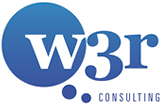Is your organization getting the most it can from the agile philosophy? Across industries, there’s a sizable performance gap between what most stakeholders expect from agile best practices and what they end up receiving. In fact, surveys show that although 97% of organizations have implemented agile development methods, only 17% can proclaim any level of proficiency.
Why are agile delivery methodologies falling short of the desired results? Through extensive hands-on experience and observations, we’ve been able to pinpoint some of the challenges that hinder the performance of your agile project management principles. Here are four questions that can help you get to the bottom of your struggles and empower you to improve your results.
Is Agile Right for Your Project?
One critical question that often goes unasked by those new to the agile framework is whether agile is best suited to deliver results for their project. Agile is not universally superior to other project management approaches. There are pros and cons to this method that any organization eager to implement it should fully consider.
When is agile right for your organization?
- You have a tight deadline – This methodology is ideal when your deadlines are rock solid. From the agile viewpoint, it’s better to provide end users with a minimum viable product (MVP) that addresses their core goals rather than one with all the bells and whistles months (or years) after the target launch. Agile road-mapping outlines feasible timelines early, allowing sprints to complete the primary requirements, structure, and features expected at launch. Any peripheral features can be added in future iterations.
- Your project is large or mid-sized – Though some people will tell you that agile doesn’t work for large projects that demand scalability, we’d contend that it’s more of a matter of expertise. A study of over 100 software development projects found that larger projects with more significant budgets saw greater client success and overall benefits than hybrid or non-agile projects. Their prosperity depended on the success of their internal team or consulting partner.
- You want to reduce risks – By nature of its iterative process, agile projects are much better at catching errors, bugs, or deficiencies in the MVP than traditional Waterfall methodology end result. The review process built into sprint cycles allows for continuous improvements that increase the overall performance of the deliverable.
When is agile wrong for your organization?
- You need approval at each stage – With agile development practices, your team is immersed in multiple life cycle stages at once. If stakeholders need to sign off on a completed product before you begin QA phases, agile will cause regular headaches for your team and bring progress to a halt.
- You need extensive documentation – The documentation created through agile development processes are similar to the framework itself. Often, it’s almost spartan (aiming for only essential documentation that fits the primary Story), collaborative, and meant to evolve through iterations. Organizations that are unable or unwilling to shift from the linear documentation of Waterfall or other methodologies are better not jumping on the agile bandwagon.
Are You Using Change Management to Shift to Agile?
For agile to reach its full potential within your organization, you cannot hold onto old methodologies. That means a behavioral shift in your approach to workflows and deliverables.
If you decide to handle the project with in-house technical resources, you need to upend some ingrained mentalities to implement an agile project framework successfully. Everyone from your project managers and delivery team to your executives, directors, and product owners need to be bought into the new delivery process. This can involve your change management team adapting their expectation and approach to encourage greater sponsorship, communication, and methodology reinforcement tactics.
However, if the project has a set delivery date or will not require ongoing support, you can bypass the agile evangelization by working with a project based consulting partner. This approach will provide you with technical resources and management that grasp the agile process and have extensive experience working through its challenges. You can harness the iterative and collaborative elements of agile without any of the acclimation.
Do You Have Cross-Functional Teams?
Unlike Waterfall development processes, the developers necessary in an agile framework are more involved in holistic processes. Think of them as product developers. They develop the story roadmap and requirements at the outset, work on hands-on programming, run testing, create documentation, and launch the project. For your project to succeed, you need a workforce qualified in all of these different processes.
Moreover, cross functional teams are better suited to handle the evolving priorities of the agile methodology. They are better at resolving conflicting priorities, opting for whichever is more important for the end goal rather than a particular discipline. Plus, they’re more familiar with the various aspects of the development life cycle, allowing them to better communicate with the team, users, and stakeholders.
Should You Hire a Team or Work with a Skilled Partner?
Though an agile framework is beneficial in many situations, many organizations struggle over the decision to hire internal resources or partner with a project-based team. Though we’ve discussed some of the considerations throughout, here are all of the factors you need to remember as you make your decision.
Signs you should hire for agile:
- The project is a primary part of your business that requires ongoing updates.
- Your entire organization is making the transition to an agile mindset.
Signs you should work with a contingent workforce:
- Your project is critical but contained, only requiring limited usage of agile knowledge.
- Your project will only impact a particular part of your organization or vertical.
- Your project is on a tight deadline and requires rapid adaptation to agile.
Does working with a partner to bring the agile framework to your next project sound ideal? Contact w3r Consulting to find the right fit for your organization.
Related Articles
Will a Statement of Work Solution Deliver the ROI You Need?
How to Maximize the ROI of Your Contingent Workforce Management
Recruiting Passive Candidates during an IT Talent Shortage
[/fusion_builder_column][/fusion_builder_row][/fusion_builder_container]

